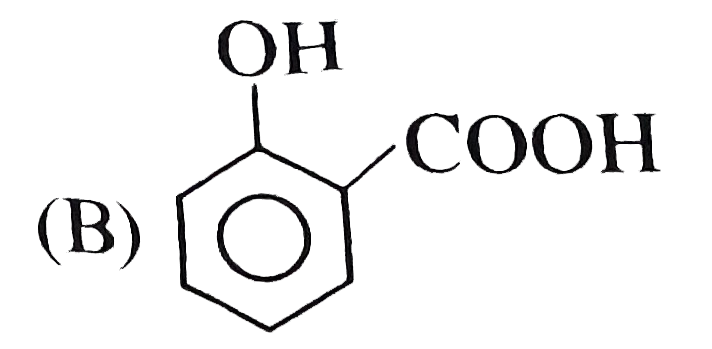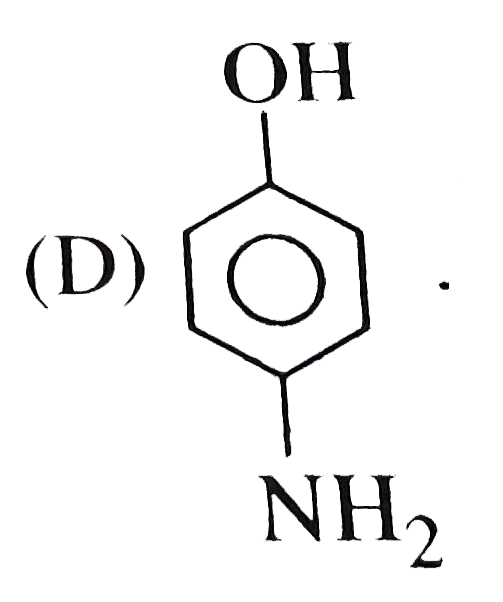An organic compound (A) C7H6O reduces Tollen's reagent. Compound (A) reacts with acetic anhydride in the presence of anhydrous sodium acetate and gives an unsaturated acid (B). Compound (A) reacts with acetone in the presence of alkali and gives (C). What are (A), (B) and (C)? Explain the reactions.
(i) An organic compound (A) is identified as C6H5CHO benzaldehyde. Benzaldehyde reduces Tollen's reagent and also undergoes Cannizaro reaction.
C6H5CHO(A)+Ag2O→2Ag+C6H5COOH(B)
(ii) Benzaldehyde reacts with acetic anhydride in the presence of sodium acetate gives cinnamic acid and it is (B) an unsaturated acid.
C6H5CHO(A)+(CH3CO)2OCH3COONa−−−−−−−→C6H5CH(B)=CHCOOH+CH3COOH
(iii) Compound A reacts with acetone to form compound (C) benzal acetone.
C6H5CHO(A)+CH3COCH3NaOH−−−→C6H5CH=CH−COCH3(C)

Topper's Solved these Questions
- CARBONYL COMPOUNDBOOK - SURA PUBLICATIONCHAPTER - CARBONYL COMPOUNDEXERCISE - UNIT TEST (CHOOSE THE CORRECT ANSWER)
4 Videos
- CARBONYL COMPOUNDBOOK - SURA PUBLICATIONCHAPTER - CARBONYL COMPOUNDEXERCISE - UNIT TEST (VERY SHORT ANSWER)
2 Videos
- CARBONYL COMPOUNDBOOK - SURA PUBLICATIONCHAPTER - CARBONYL COMPOUNDEXERCISE - LONG ANSWER
27 Videos
- BIOMOLECULESBOOK - SURA PUBLICATIONCHAPTER - BIOMOLECULESEXERCISE - UNIT TEST
9 Videos
- CHEMICAL KINETICS BOOK - SURA PUBLICATIONCHAPTER - CHEMICAL KINETICS EXERCISE - UNIT TEST (ANSWER THE FOLLOWING IN DETAIL)
2 Videos
Similar Questions
Which one of the following compound gives aspirin on reacting with acetic anhydride in presence of H2SO4
View SolutionA nitraite on acid hydrolysis gives compound A, which reacts with thionyl chloride to give compound B. Benzene reacts with compound B in presence of anhydrous AlCl3 to give compound C. The compound B reacts with ethyl alcohol to give ester D. Identify the compounds A,B C and D and write the equations.
View Solution
Knowledge Check
Acetic anhydride reacts with diethyl ether in the presence of anhydrous AlCl3 to give
ACH3COOCH3BCH3CH2COOCH3CCH3COOCH2CH3DCH3CH2OHAcetic acid reacts with chlorine in the presence of catalyst, anhydrous FeCl3 to give:
Aacetyl chlorideBmethyl chlorideCtrichloroacetic acidDchloral hydrateWhich one of the following compound gives aspirin on reacting with acetic anhydride in presence of H2SO4
A B
B C
C D
D
An organic compound (A) C6H12O reacts with hydroxylamine to give an oxime. It also reduces Tollen's reagent and undergoes cannizzaro's reaction. What is the structure of (A)? Write down the different reactions involved.
View SolutionAn organic compound (A), C2H5NO2 gives on reduction another compound (B) C2H7N. The reaction of nitrous acid on (B) evolves nitrogen and gives another compound (C) C2H6O. The compound (C) on oxidation gives acetic acid. The compounds A, B, C are
View SolutionAn organic compound of formula, C3H6O forms phenyl hydrazone, but gives negative Tollen's test . The compound is
View SolutionAn organic compound (A),C7H6O gives positives test with Tollen's reagent,on treatment with alcoholic CN, (A) yields the compound (B),C14H12O2 . Compound (B) on reduction with Zn-Hg, HCl and dehyration gives an unsaturated compound (C), compound (D) , C14H12O2 . Compound (D) on heating with KOH undergoes rearrangement and subsequent acidification of rearranged products yields an acidic compound (E),C14H12O3.
Structure of compound (B) is :
View SolutionBenzonitirle (A) reacts with stannous chloride in the presence of dil HCl to give a reduction product 'B' . Compound 'B' on acid hydrolysis gives compound 'C' . Identify compound 'B' and 'C' . What is the nitration product of compound 'C' ?
View Solution
